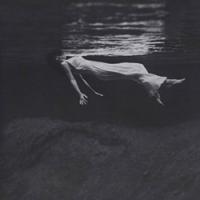Bill Evans Jim Hall "Undercurrent" Equals Sublime Music Making
These are improvisations of almost cosmic order as the two dance with daring spontaneity along the familiar melodic lines of "My Funny Valentine," "I Hear a Rhapsody", (and familiar at least to MJQ fans "Romaine" [written by Hall and spelled incorrectly here minus the "e"] and 'Skating in Central Park") and a few others.
This is a short, six tune album but the depth of the thinking and playing is such that you'll leave satisfied each listen.
Listen to how the two exit "My Funny Valentine". It sounds as if the same musician was simultaneously playing both instruments, so in tune were Evans and Hall with each other's musical ideas.
PIty poor engineer Bill Schwartau (he also engineered the superb sounding first Peter, Paul and Mary album among many others), who had to deal with the ultra-dynamic piano and the soft spoken guitar—no "do overs" allowed I bet.
Unfortunately there are some instances of over modulation "crackling" distortion that sounds like mistracking and some tape hiss, which according to the liner notes is on "the original master tapes." However, I seriously doubt this was cut from the master tapes. It sounds like at least a second generation tape compared to original pressings.
The piano's attack is dulled and the notes lack fully expressed textures and harmonics. Hall's guitar attack sounds softened, dulled and lacking in the air around the notes so obvious on the original. When even damps the sounding board on the original you can hear the resonance stop dead. It's not so obvious on the reissue.
Schwartau chose to closely mike the piano, spreading the keyboard across the soundstage while sensibly confining the guitar to the center. The result is an unrealistic presentation but one that makes easy "watching" Evans' hands glide across the keys. The sense of "stereo" is muted on the reissue compared to the original.
I have two original "1A" pressings: one processed by Columbia with the familiar Columbia matrix stamped numbers and one with hand scribed numbers. The two sound sonically very similar but neither are great examples of '60s pressing art. One shows signs of being pressed from an overheated "burnt biscuit" and of course the distortion is in the original tape too.
So, sonically while the original is far superior to this reissue, even that is not a sonic treasure. It's a musical treasure though, and for that reason highly recommended though if you can find a clean, quiet original, it's preferable to this (good luck finding one!). If you don't buy this because of the sound you're nothing but a...a.....audiophile.
I see that Mobile Fidelity has "TBA" plans to reissue this on its silver series, meaning they are probably using this same tape. It will sell for less so perhaps it will be worth the wait if just for the lower price. Still, I'm glad Pure Pleasure reissued this. By the way, read the "annotation" at your own risk and if you do have a vomit bag handy.




